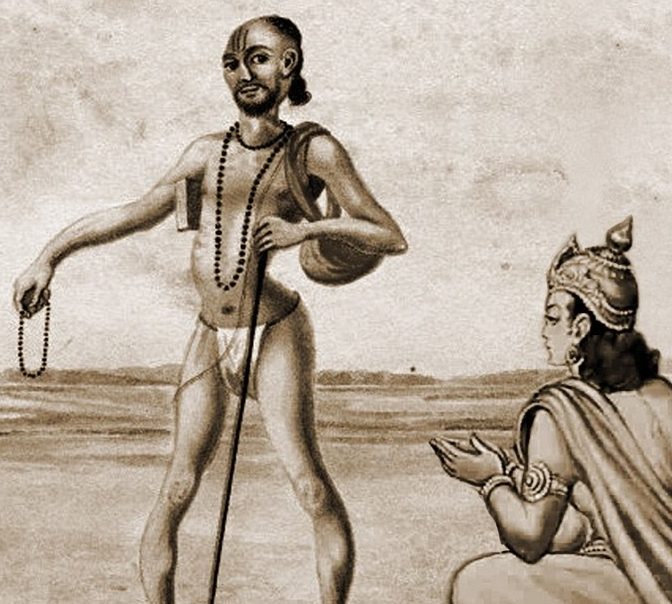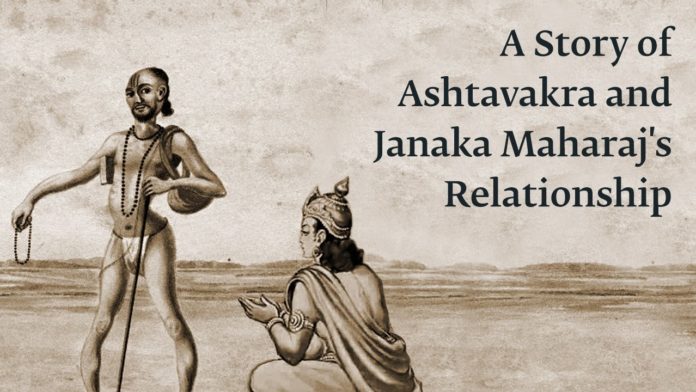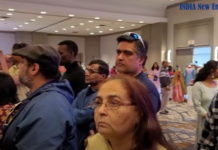By Upendra Mishra
WESTON, MA—Most of us are familiar with the Bhagavad Gita, often referred to simply as the Gita. It is a dialogue between Pandava prince and warrior Arjuna and Lord Krishna. The Ashtavakra Gita, also known as Ashtavakra Samhita, is a dialogue between King Janaka and a young teacher Ashtavakra. The key message may be the same in both, but setting is very different in both and so are the students and teachers and the method of teaching.
In the Bhagavad Gita, Lord Krishna explains various paths to Arjuna and many aspects of human life in 700 verses, covering a broad range of topics, including ethical dilemmas, dharma, bhakti, karma, and yoga.

In 298 verses of Ashtavakra Gita, Ashtavakra talks only about the Self and its awareness and how can one instantly transcendence to the ultimate state of bliss and happiness. There is no need for meditation, no need for yoga, no need for guru, no need for any code of conduct and no need for the so-called God’s blessing. “If you think you are free, You are free. If you think you re bound, You are bound. For the saying is true: You are what you think.” In the Ashtavakra Gita, the scene is serene and peaceful where two enlightened souls are talking something very profound after years of practice and living and experiencing these truth in their own daily lives.
In the Bhagavad Gita, the scene is a battlefield, a fight between within a family. The teacher is God himself. The student is Arjuna, a strong and determined man, but who is lost, does not know what to do, has spent 13 years in exile and wants to win and regain the kingdom for his brother. Krishna is the teacher, the guide, and Arjuna’s charioteer.
In Ashtavakra Gita, the student is King Janaka, one of the most revered kings who rules his kingdom efficiently, is himself an awakened human being, enjoys all the luxuries and pleasures life, and still he remains unattached to everything as if he possesses nothing. He often engages himself with spiritual discourses and is always interested in both teaching the wisdom of life to those wants to learn from him and learning from those he thinks are worth learning from.

Ashtavakra literally means someone whose eight limbs are bent or handicap. He had an in-depth understanding of the Self and summarized the Advait (nondual) philosophy beautifully in a small text called Ashtavakra Gita. Ashtavakra is simple, bold, clear and to the point. He teaches that once you go beyond fear and doubt, you instantly transform yourself. He bluntly makes us aware of awareness: “Yesterday I lived bewildered, in illusion. But now I am awake, flawless and serene, beyond the world.”
If you are not familiar with teachings of Upanishads and such scriptures, it may be a bit difficult to grasp Ashtavakra Gita. However, if you do or try harder with an open mind, there is nothing like Ashtavakra Gita. After grasping this, you don’t need to learn or know anything else. If you are interested, I recommend a translation of Ashtavakra Gita by Thomas Byrom: The Heart of Awareness (93 pages, 1990, Shambhala Dragon Editions.)
One day, King Janaka sat down with the young Vedic sage Ashtavakra, and asked: “O Master, tell me how to find detachment, wisdom and freedom?”
It is worth nothing that King Janaka was already known as the most detached person; he was the most powerful king of the time and he had freedom, resources and power to do anything he wanted to do. But still he wanted to know “how to find detachment, wisdom and freedom?” You can own the whole the world and still may not be free and that is why emphasis on freedom is so important here. How to be free?

Ashtavakra told Janaka:
“Child,
If you wish to be free.
Shun the poison of the senses.
Seek the nectar of truth,
Of love and forgiveness,
Simplicity and happiness.”
Ashtavakra always teaches to bring oneself to the Self and most importantly to the awareness of the Self and the fact that the Self is different from your body and even your mind. He says:
“Earth, fire and water,
The wind and the sky—
You are none of these.
If you wish to be free,
Know you are the Self,
The witness of all these,
The heart of awareness.”
And then he advises to set oneself aside from the body:
“Set your body aside.
Sit in your own awareness.
You will at once be happy,
Forever still.
Forever free…
Right or wrong,
Joy and sorrow,
These are of the mind only.
They are not yours.
It is not really you
Who acts or enjoys.
You are everywhere,
Forever free.”
(Mr. Mishra is managing partner of the Waltham, MA-based integrated inbound marketing and PR firm The Mishra Group. He writes about his three passions: marketing, scriptures and gardening.)














